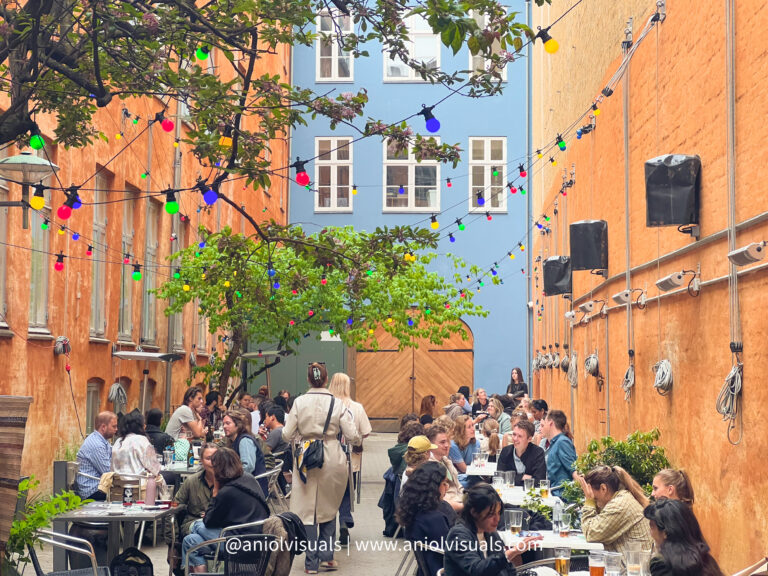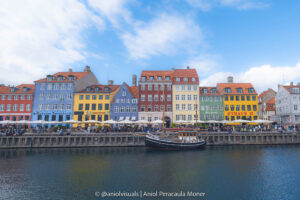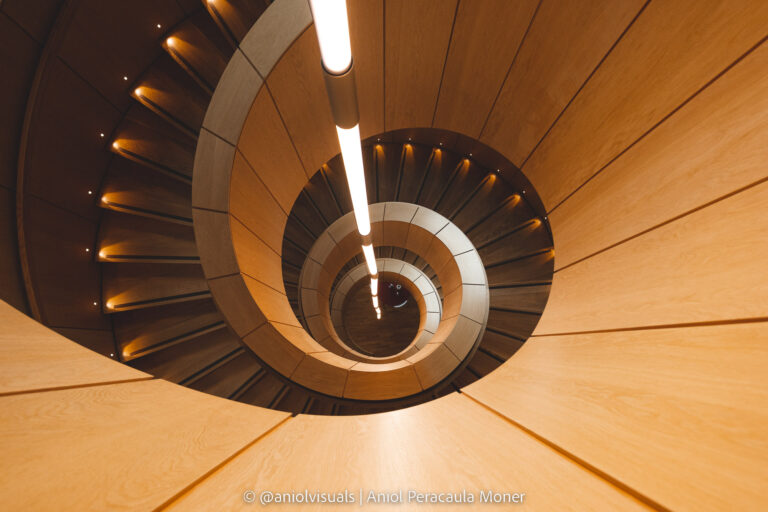Copenhagen travel guide
Discover Copenhagen, the capital city of Denmark, plan your trip, and get inspired with this travel guide!
Get lost in its streets, visit the colourful Nyhavn area and find out how to enjoy one of Europe’s highest quality of life cities.
Learn how to get to Copenhagen, how to move around, and where to stay.
Budget your trip and find out the best seasons to visit Copenhagen.
Discover travel and photography guides for the main attractions in Copenhagen.
How to get to Copenhagen, Denmark?
Copenhagen is the capital city of Denmark, one of the Scandinavian countries, and is located in northern Europe. It only has one land border, Germany in the South. Given that Greenland is technically Denmark, it can be said that it also borders Canada. Nonetheless, Denmark’s neighbours are Germany, Sweden and Norway. The last 2, though, share a sea border.
Of the almost 6 million Danish people, over 1.2 million live in Copenhagen, whose metropolitan area contains almost one-third of the population of the country. Thus, it is the main economical and cultural hub of the country.
This makes getting to Copenhagen very easy. There are five feasible ways of transport to get to the capital city of Denmark: plane, train, boat, bus and private car.
The Copenhagen-Kastrup (CPH) airport, the main airport of the city and country is the main entry gate for those visiting Copenhagen. There are regular low-cost flights from the main European Capitals, and even smaller cities have regular flights to CPH.
Trains are very common ways of transportation in Europe. with flights requiring passengers to be 2h in advance to the airport, if you are getting to Copenhagen from either Sweden, Norway, Germany or even the Netherlands, or Belgium, check the train options. Trains are comfortable, quite affordable, and reliable (with the usual German train delays). For example, to go from Copenhagen to Stockholm takes almost the same time by plane and train, and is usually way more expensive to fly than to take the train.
Boats or ferries are also feasible options, although not so common given how easy it is to fly or take the train/bus/car.
Speaking about buses and cars, these are the other main means of transport. With the appearance of Flixbus, if you want to travel cheaply, don’t look any further. Cheap tickets, good buses and lots of routes. Instead, if you are more of a road trip person, you can always rent a car. However, note that Copenhagen is not such a car-friendly city. it will be way easier to walk and use public transportation than to drive to move around.
Moving around Copenhagen
Copenhagen is a very easy-to-navigate city. Its public transportation system is efficient, and it is pleasant to walk around, so you might end up walking more than using the metro or trains. Depending on where your accommodation is, though, I would recommend commuting to the city centre and from there, getting to all the nearby spots. Given that Copenhagen is an expensive city, apartments and hotels/hostels can be a bit outside the old town area.
To buy public transportation tickets, you will have 3 ways, either using the ticket machines (there are in the airport, metro stations, and even in some 7-eleven kiosks), their mobile app (DOT billetter, with which I had mixed feelings), or on the bus with cash only. However, as in most major cities, there are 24-48-72h cards for tourists. Official information here.
If you get to Copenhagen by plane, the fastest way to get to the city centre is by train or metro. I would recommend the metro as there is a regular service that connects the arrivals terminal with the heart of the city. It takes around 20 minutes to go from the airport to Nyhavn, where the famous colourful danish houses are, and the price is under 5€ (36DK).
Once in the city, as mentioned above, the best option is either to walk or to take the multiple trains, buses and metros that connect the city. If the weather allows it though, it is strongly recommended to walk, as there are interesting spots on every corner. Walking is always the best way to understand and discover an unknown place!
How many days to stay in Copenhagen?
This was the first question I had when I started planning my trip to Copenhagen, and one that any travel guide should answer.
The ideal number of days to stay in Copenhagen depends on your goal. To see the main touristic spots, 3 days could be enough to cover most of them. Instead, if you want to get to know less crowded areas, and to have some time to just roam around aim for 4-6 days. With 4-6 days besides visiting the top sights, you could add a day trip to Malmö (Sweden) or explore the Danish countryside, as well as visit some of its museums.
However, the time of the year should be considered when deciding for how long to stay in Copenhagen. While during summer (and late spring and early autumn) there is a lot of daylight, during wintertime, the city is a bit darker and the weather can be less welcoming. Thus, I suggest spending more days in Copenhagen if the weather conditions are supposed to be favourable at the time of the year that you will be there.
Where to stay in Copenhagen?
Any Copenhagen travel guide has to include a section on where to stay. In the case of Copenhagen, given that the city is built next to the sea, it means that it expands only in some directions.
Besides the obvious tip of the closer to the city centre the better, there are a couple of areas to consider when choosing accommodation. The area between the city centre and the main train station is a really nice place to stay. Following the man-made lakes that surround Copenhagen on the west and north these are also good areas to stay.
The southern part of the city might be less touristy. Thus, not so many people choose to stay there as it would be mostly a place to sleep, without many things to do around.
Thus, aim for a place in the Indre By area. It contains the city centre, the famous Christiania area and some cool accommodation options, from five-star hotels to affordable hostels.
Staying in the city centre though can also mean some activity and nightlife. Make sure to check close-by pubs or bars, and read online reviews before booking your accommodation!
How expensive is Copenhagen?
Copenhagen is known to be one of the most expensive travel destinations in Europe. Although it is not Switzerland, Denmark is not a cheap country. Despite being a European Union member, Denmark has its own currency, the Danish Krone (DK).
In a nutshell, the cheapest hostels in town cost around 35€ (260 DK), and things like food and tickets to tourist attractions will increase your expenses to around 80€ per day minimum. Given the high cost of accommodation, if you want to sleep in a private room, expect to spend a minimum of 100€ per day.
However, there are ways to save money and make your experience in Copenhagen more affordable. Check my Copenhagen travel cost guide to find the average prices of food, accommodation, tickets and transportation, as well as budget and tips on reducing your expenses!
When is the best time to visit Copenhagen?
Copenhagen has a changing climate. Due to its latitude, there are months when sunlight is almost inexistent, and days are very short, whereas during summer, days are long, and temperatures very pleasant. The city has two very different faces during the warm months and the cold months. So, what is the best season to visit Copenhagen?
- Winter: the winter in Copenhagen is cold, long and with not a lot of light. It sounds like a bad time to visit the city, but if you want to avoid tourists, get some snow (hopefully), and see a less-known Copenhagen, winter could be the season for you. Note that the sunlight hours during January or February are around 2-3 per day.
- Spring: The city comes to life with the spring. Days get longer, temperatures higher and parks and outdoor areas are open for everyone. As with every tourist destination, it is a bit less crowded than in summer, so if you can avoid the busiest months, and don’t mind slightly lower temperatures, spring could be a great time to visit Copenhagen. Rainy days are quite consistent across seasons, but interestingly, it is not during Spring when more rain is accumulated.
- Summer: The tourism season at its best. Most people choose summertime to visit Copenhagen, and it makes sense. Long, days, very pleasant temperatures (around 20 ºC/68 ºF), and the city full of life. Nonetheless, expect some rain, as August is the month with more rain accumulation in Copenhagen. One of the drawbacks of the summer is the increased prices that come with increased demand. In an expensive city like Copenhagen, it is a variable that most people take into account.
- Autumn: Tourists start to leave, and so do the sun hours. Especially in November, the temperatures start to fall, and the city changes to its winter face again. However, just like in Spring, it is not a bad season to visit Copenhagen. Just note that the closer to the winter months, the less time you will be able to spend outside or with the sun in the sky. Oh, and maybe you get to see the first snowfall…
What are the best things to do in Copenhagen?
No Copenhagen travel guide is complete without a long list of attractions and activities. Copenhagen is a city full of things to do, with plenty of outdoor and indoor activities. From the famous colourful Nyhavn houses to the more unknown spots on the outskirts of the city. These are some of the must-do activities when visiting Copenhagen.
- See the Copenhagen Mermaid: the icon of the city, a small (be warned) sculpture of a Mermaid on the shores of the Nordic sea. Probably one of the places that most tourists accumulate, and a must-to, although a bit anti-climactic.
- Visit Nyhavn and its channels: with its colourful houses, the channels of the old town of Copenhagen are without any doubt among the best sights of the city. Full of restaurants and people in the evening, or deserted and silent in the morning. You choose when you want to visit it. My recommendation is both of them!
- Enjoy its green areas: Copenhagen has lots of greenery. From the famous Kastellet to more unknown areas such as the Vestre Cemetery and its tree alley. Gardens and public parks are free and a way to take a break and relax from all the walking around the city.
- Explore Christiania: Did you know that Copenhagen has a commune, known as Freetown Christiania, that declared itself independent from the country in 1971? And it is right in the heart of the city! Although it is known for the possibility to buy prohibited substances, it is a must-visit area. Get lost in its green areas and admire the different houses and constructions.
- Eat one of the world’s best cheeseburgers: Bloomberg named Copenhagen’s Gasoline Grill cheeseburgers as one of the best in the world. I can just say that it is amazing! And if you are not into hamburgers or meat, just explore the many food options that the city offers.
- Admire the architecture: Copenhagen has a very unique architectural style. It is a mix of old and new structures that give a different vibe to the city. From the modern Axel towers to the classical Tivoli amusement park rollercoasters, make sure to keep an eye on the buildings around you.
- Go on a day trip to Malmö, Sweden: It takes just one hour by train to change from Denmark to Sweden! Malmö is a great one-day trip from Copenhagen. It is a quiet city with a modern style, a beautiful beach and coastline (with views over Copenhagen) and a cute old town.
Explore aniolvisuals Copenhagen detailed travel guides!
Copenhagen photography guides
Copenhagen is a gem for travel, street and architecture photographers. Anyone with a camera or a smartphone will take great photos if they know the best spots and locations.
If you want to take the best possible photos, or to get inspired and start planning your photography trip, make sure to check my Copenhagen travel photography guide, with the best spots in the city, tips on how to make the most of each one and honest reviews of not-so worthy spots (spoiler, the Copenhagen Mermaid is not the best photo spot in the city).



